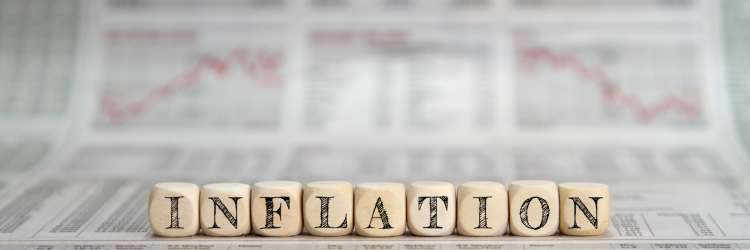Economists get a bad rap. Economics is sometimes called "the dismal science." It is the subject of jokes such as, "If you laid all the economists in the world end to end, you still wouldn't reach a conclusion." President Truman once said he wanted a one-handed economist because all the economists he knew said, "On the one hand... but on the other hand...."
But in economically confusing times such as we're living in now, economists are our best hope for sorting out some pressing issues, including a key one for insurance: the trajectory of inflation and its likely effect on insurers' returns on investment portfolios, on economic growth in general, on growth in insurance premiums in particular, on costs for repairs, etc. So, I recently sat down with my favorite, "one-handed" economist, Michel Leonard, the head of the Data and Analytics Department at the Insurance Information Institute.
The short version of his analysis is: The Fed is likely being too optimistic when it projects that annualized Inflation will drop to 4% in the U.S. by the end of the year, but inflation will head back toward the historic norm of 2% by the end of next year.
The longer answer follows.
We started on an optimistic note, talking about growth in the U.S. economy, which clocked in at a whopping 6.5% on an annual basis in the first quarter. While that figure will clearly trend down toward the historic average of 1.5% to 2.5% and while Michel said a recession is even possible in the next few quarters, he said the insurance industry is positioned for significant growth in the next six months.
The industry's performance tends to mirror that of the overall economy, but some months behind, so its growth should stay strong even as the rest of the economy sees growth rates slow.
The inflation picture is less rosy. We talked when the latest consumer price index published by the Labor Department showed an 8.5% annual increase for March. (The figure dropped slightly in April, to 8.3%.) And Michel said replacement costs for insurers have been rising some 16% annually, or almost twice as fast. He said price increases will slow for insurers by the end of the year, along with overall inflation, but will still far outpace most costs. He expects annual inflation for replacement costs will still be 12% to 14% at the end of the year.
Some costs may never quite return to historic levels. Given that the pandemic has caused so many to reevaluate their work lives, Michel says many may not want to return to jobs in home construction or auto repair shops.
"Those are tough jobs," Michel said. "People underestimate how hard it is to work those 12-hour shifts in the body shop."
There's still loads of uncertainty out there, but I hope Michel's thoughts clarify the situation at least a bit. Assuming they do -- and he's typically right -- I promise to swear off economist jokes (for a while).
Cheers,
Paul
P.S. If you want to dig into his thoughts more deeply, here is a summary from the Triple-I about his latest report.


